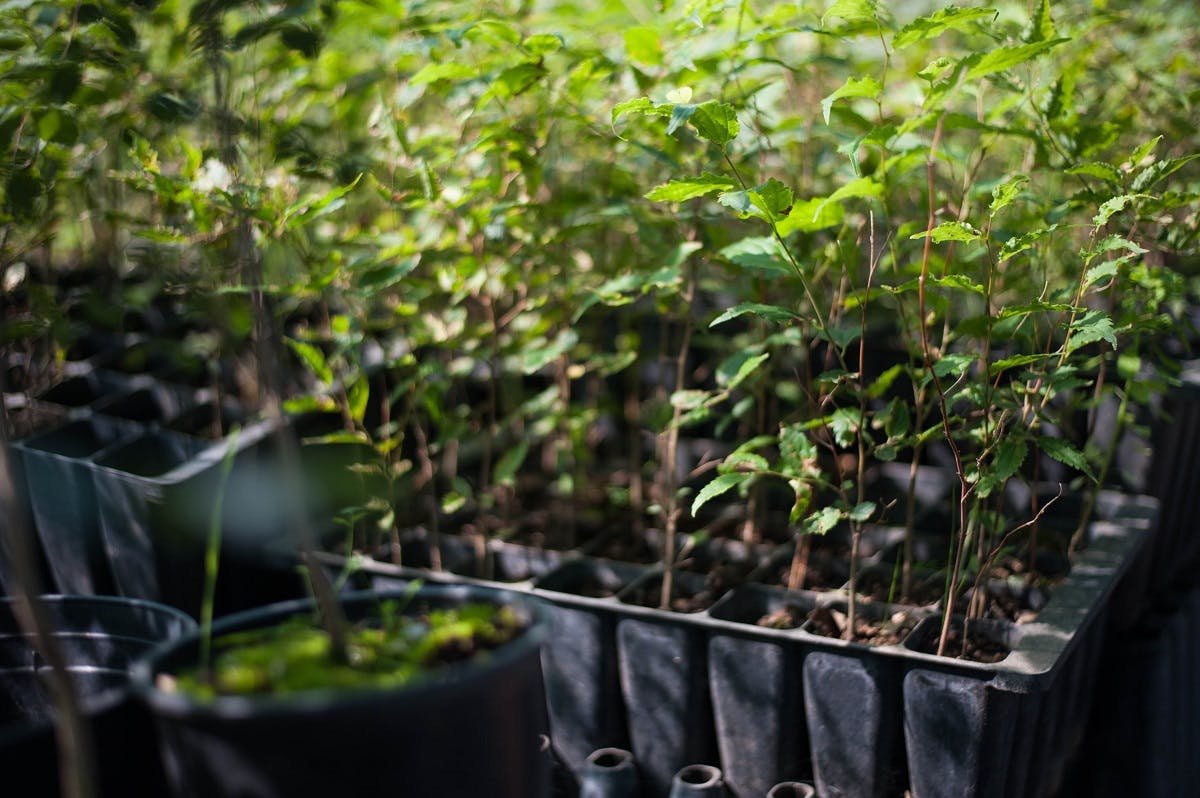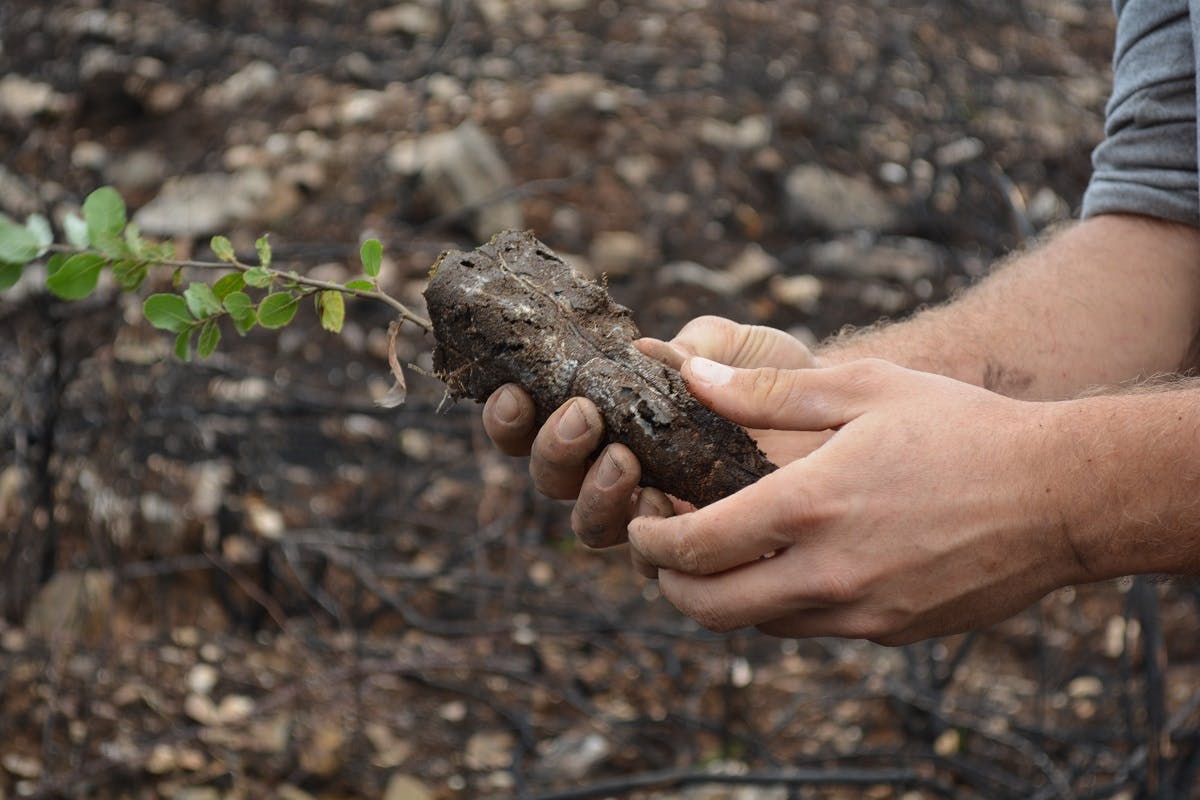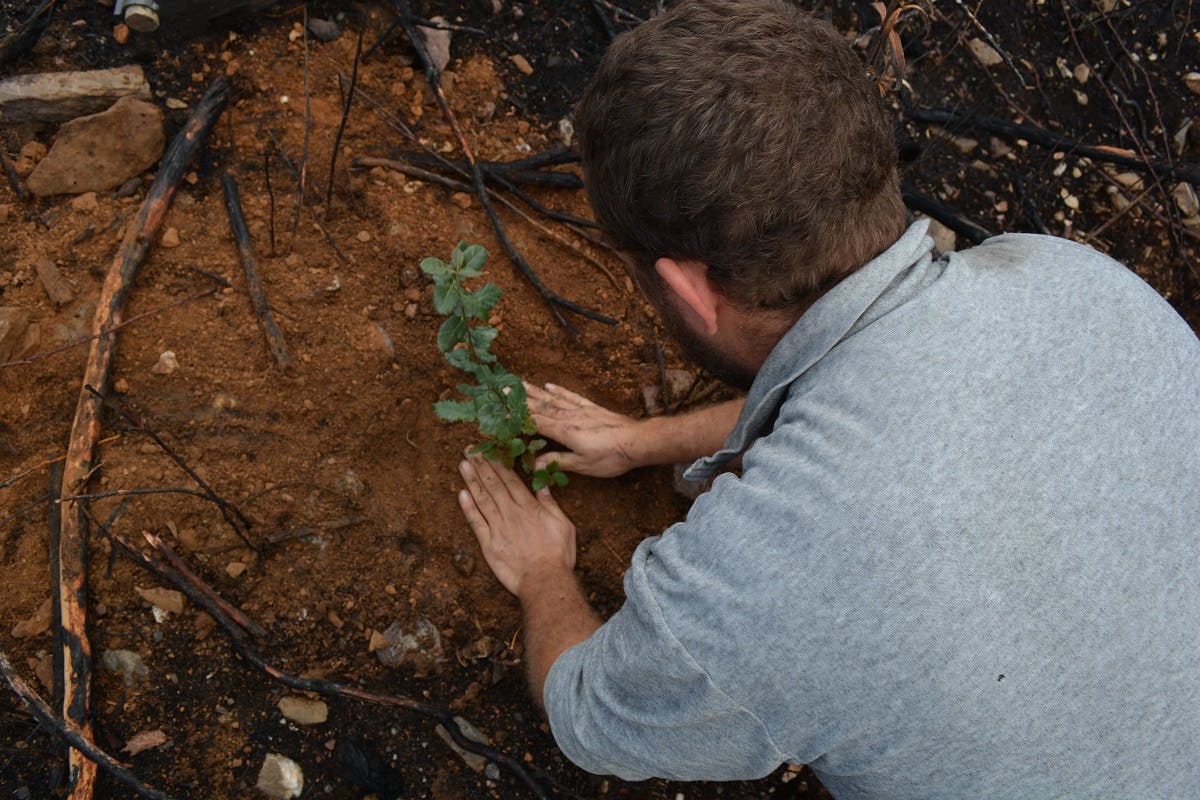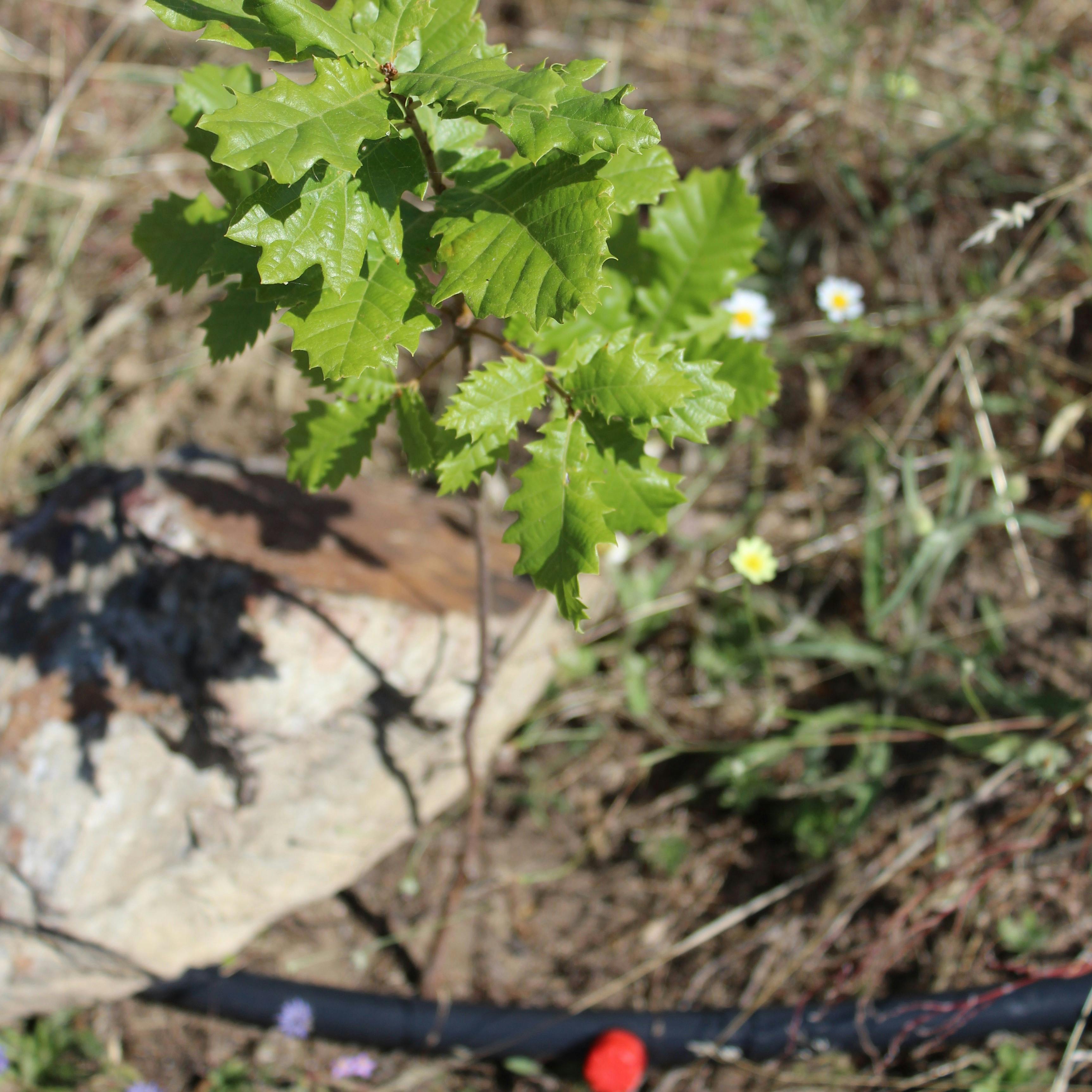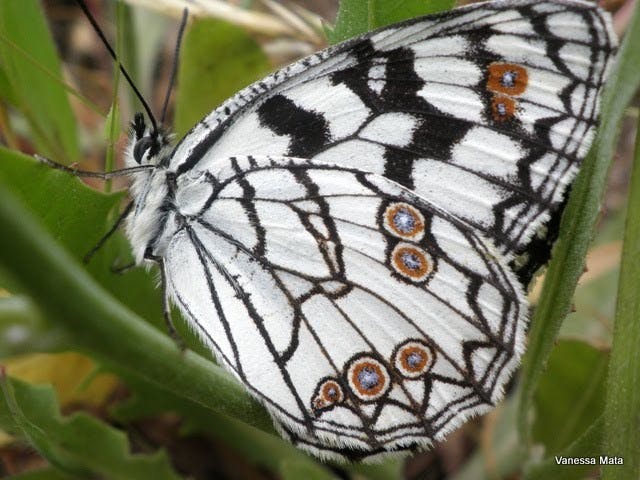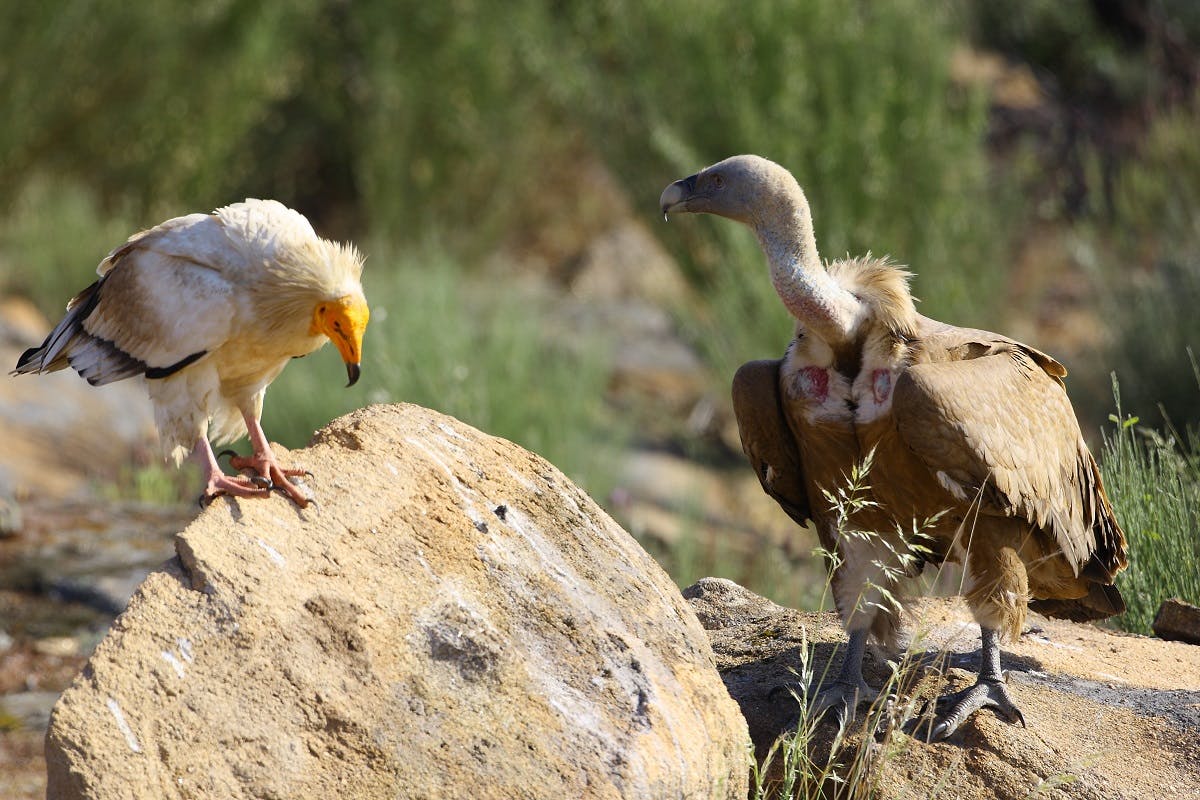- Trees planted: 10,000
- Budget spent: £5,343
- Status: Implemented
In partnership with Associação Transumância e Natureza and Rewilding Portugal, our Wildfire Restoration project focused on restoring forests to an area of the Duoro Valley in Portugal under threat from centuries of agriculture and, more recently, the devastating Portugal wildfires of 2017. After planting along all the waterlines and flatter fertile areas of the mountain valley, we successfully reached our tree planting capacity in 2019. Ongoing work will involve monitoring tree survival rates, replanting lost trees, weeding, and watering. We also supported the tagging of 6 griffon vultures with GPS devices for monitoring purposes in the nearby Côa Valley.
The Ecosystem
Tree species
At our Wildfire Restoration project we plant Portuguese oak (Quercus faginea), cork oak (Quercus suber), holm oak (Quercus ilex), English oak (Quercus robur), juniper (Juniperus communis), wild olive (Olea europaea), strawberry tree (Arbutus unedo), willow (Salix spp.), ash (Fraxinum spp.) and wild hack berry (Celtis australis).
Priority species
Grey wolf (Canis lupus), Iberian lynx (Lynx pardinus), roe deer (Capreolus capreolus), wild boar (Sus scrofa), griffon vulture (Gyps fulvus), Egyptian vulture (Neophron percnopterus) and black vulture (Aegypius monachus) are all present in the area.
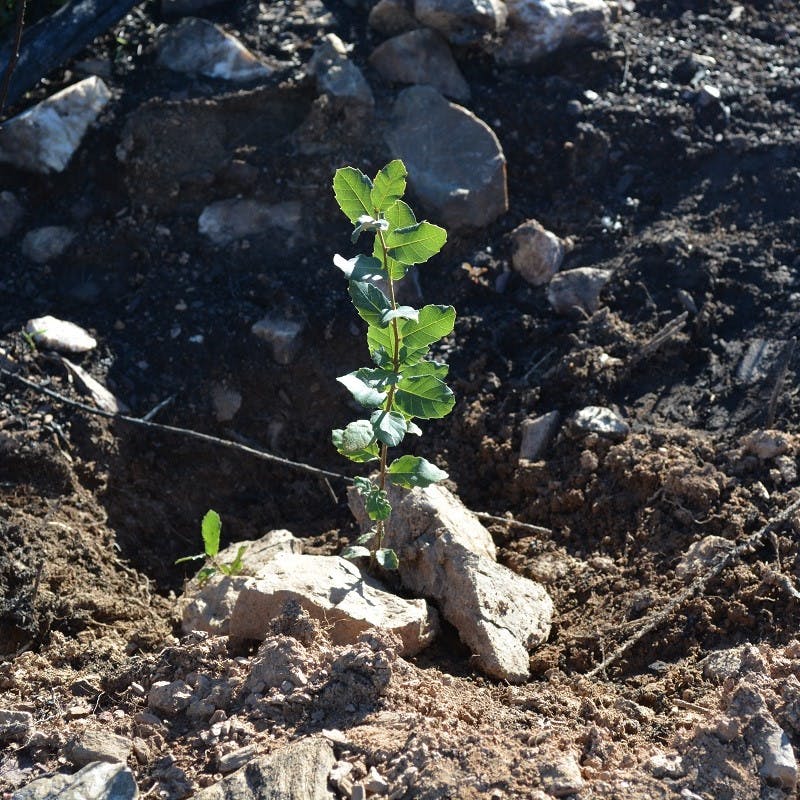
A Tough Challenge
Restoring ecosystems in a harsh environment
In order to ensure our trees have the best chance of surviving the hot Portuguese summers, we built a water source from a nearby reservoir and installed a drip feed system to provide water to each individual tree. In the future, grazing by wild horses would help prevent disastrous wildfires. - The only areas not to burn in the 2017 fires were the native forests grazed by wild horses.
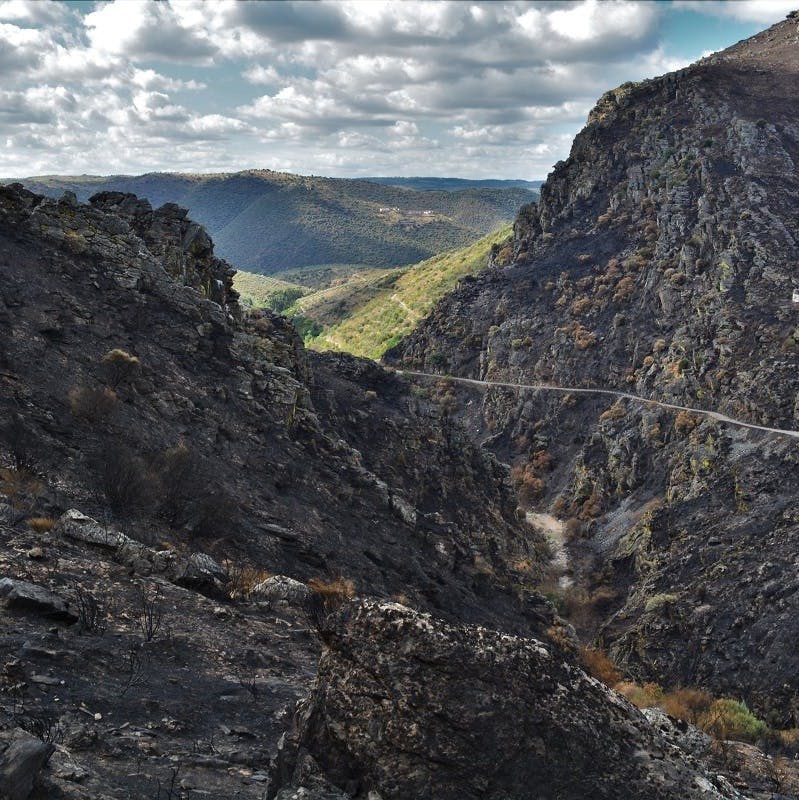
The Threats
Across Europe, families and young people are leaving urban areas for cities in search of a better life. This trend in land abandonment provides opportunities for rewilding, but it also presents challenges. In areas where native grazers have disappeared, open landscapes that had previously been managed for shepherding and other forms of livestock grazing become overgrown with shrubs and woodland. The increased fuel load combined with hotter, dryer summers can increase the incidence, scale, and intensity of wildfires.
On the 26th and 27th of August 2017, a wildfire burned through a large area of the Douro Natural Park. It was one of the many fires that ripped through Portugal that year. A summer that not only saw an abnormal 120,000 hectares burn but also the worst loss of life in the country this century. More than 150 firefighters were involved in putting out the Douro Valley fire, supported by 51 vehicles, 2 helicopters, and 1 airplane. By the afternoon of the 27th, the fire was finally under control but not before causing catastrophic economic and ecological damage to the area.
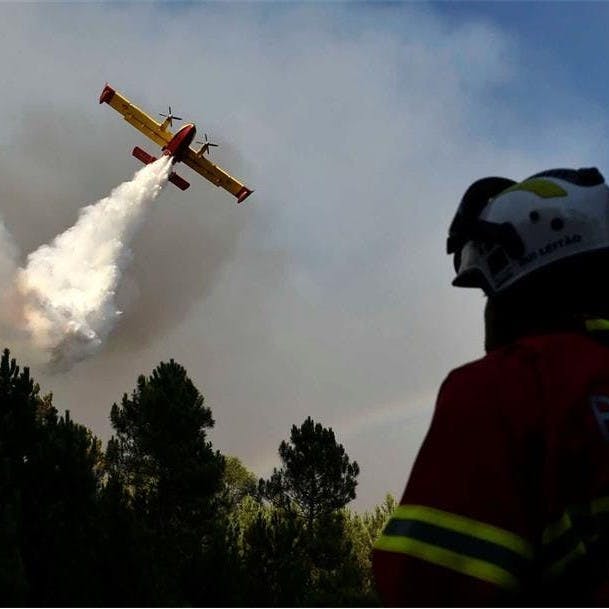
Signs of Life
The return of wildlife
Since the Portugal wildfires of 2017 blazed, vultures and eagles that nest in the nearby cliffs were the first species to return. We also witnessed a significant increase in bees and bird life to the area, in particular, the red-legged partridge, which is a favourite prey of the raptors. There has also been evidence of roe deer, wild boar, and rabbits returning to the valley.
Project Timeline
Spring 2019
GPS tagged 5 Griffon Vultures
Winter 2018
Re-planting of lost trees

Wildfire Restoration
The journey
the team behind the project
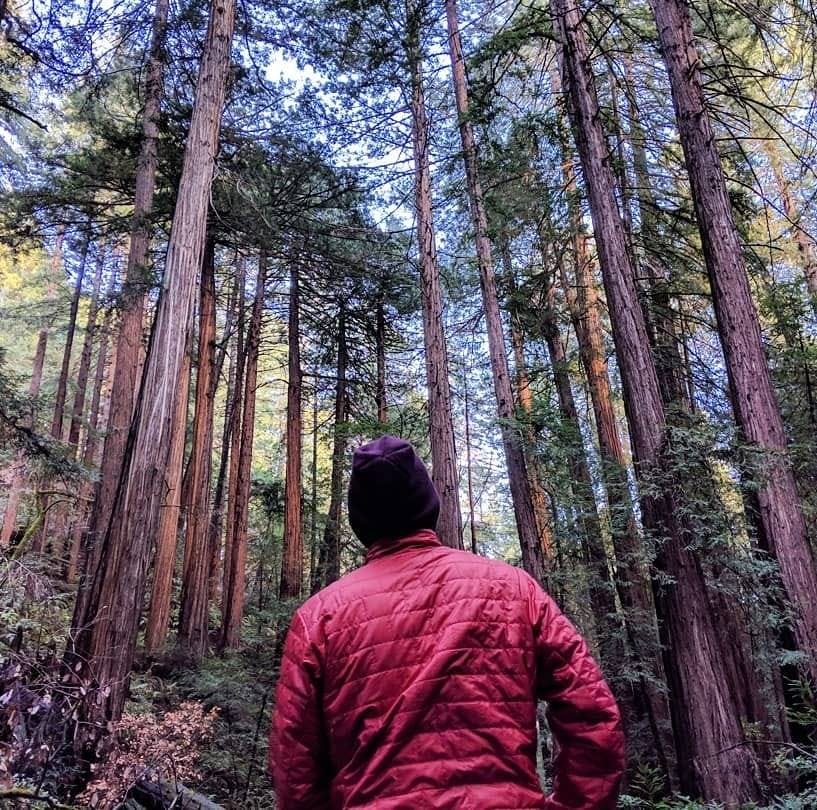
Duarte de Zoeten, Mossy Earth
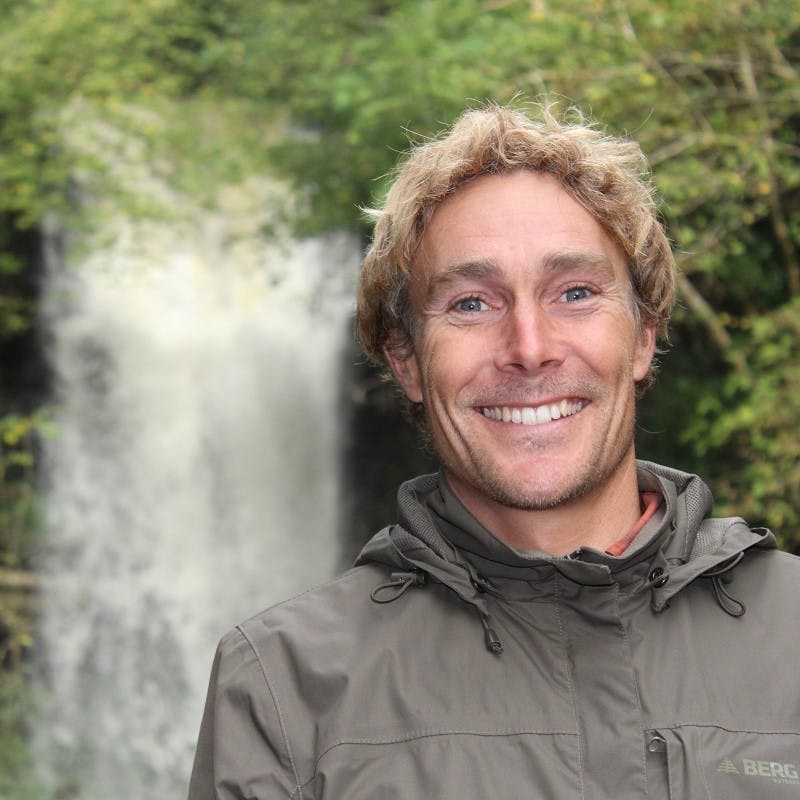
Matt Davies, Mossy Earth
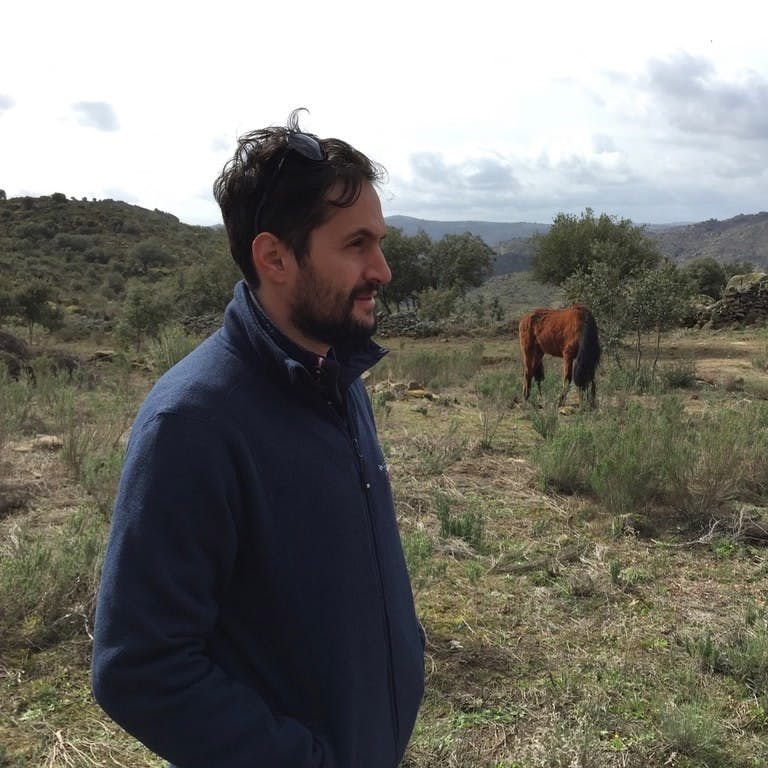
Pedro Prata, Rewilding Europe

Nicola Scacchetti, Forest Engineer
Sources & further reading

- “Landscape – wildfire interactions in southern Europe: Implications for landscape management” - Journal of Environmental Management
- “Post-wildfire soil erosion in the Mediterranean: Review and future research directions” - Earth Science Reviews
